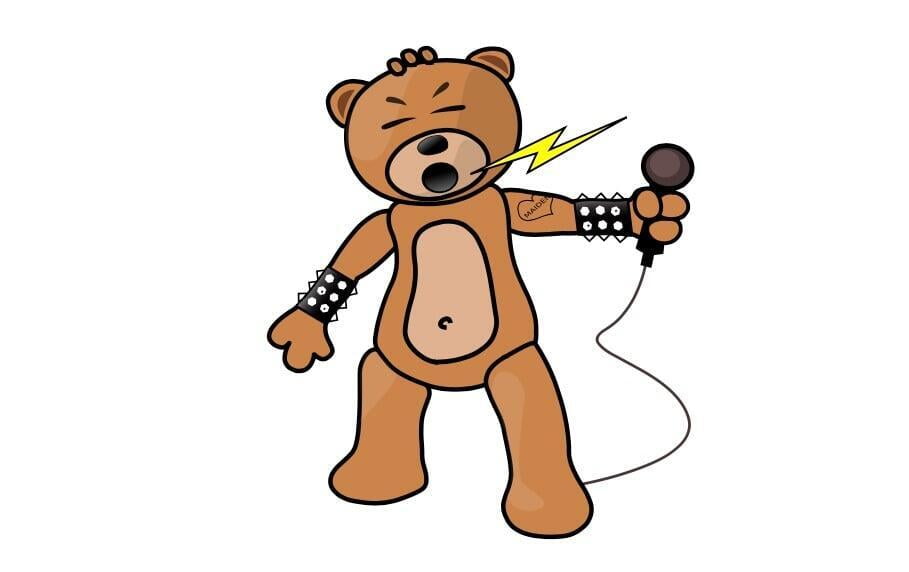Jingles for advertising began in the dark ages, when TV was black and white and men hunted mastodons. They were short and catchy and delightful in the way things of that era couldn't help but be. Singing commercials were, in fact, very popular in a time when the radio and television were, in and of themselves, novel things. But as we moved from the iron age to modern times (the 80s), jingles became longer, less catchy, more obnoxious––and impossible to avoid. Advertising jingles began getting longer around the same time that evening television sitcoms and dramas all featured theme songs. From Cheers to Golden Girls, Fresh Prince of Bel Air to The Brady Bunch, a catchy song was in vogue. Yet, in looking back at that cheesy era in America, it would seem that the jingle and TV theme song industry existed simply to serve itself. The audience had no choice in the matter, as union musicians happily waltzed into big city studios to record the day's schedule of kooky car dealership jingles and lyrical TV themes written in keys that fall outside of any musical genre. Studios specifically serving the jingle industry, known as "jingle houses", churned out annoying little songs day and night. A successful jingle-smith had a better than fair chance of living a lavish lifestyle on a hillside mansion, much like Charlie Sheen's character in 2 and a Half Men. Jingles were big business. If you could hack out saccharine melodies with impossibly awkward lyrics, you were on track to live a big life.
But whereas as popular music evolved to meet public expectations of what sounds good––jingles did not. The reason is simple: Jingles were never dependent on ratings, record sales or fans. Unlike MC Hammer, who's early success was blindsided by the rapidly changing music industry, Jingle writers and the companies that produced them were immune to shifting popular culture and the music that reflected it. MC Hammer lost his mansion after his first album, owning to poor record sales due to hip hop's drastic change spearheaded by other artists more in line with what the public wanted. It's possible, even likely that the person who next occupied Hammer's L.A. mansion was a jingle genius. Sure, jingle writers were not gonna be a big hit at the party, but who among them cared as they stolled down to the mailbox to get that big royalty check?
We need a jingle, who cares if it's annoying!
There's an old adage that goes something like: "Any exposure is good, even if it's bad." I've always had a hard time believing this. I mean, sure, if you're a nobody, and you do something ridiculous, now you're a somebody. But aren't you a ridiculous somebody? And if so, what will that get you? Hey, I'm all for being unique, and I encourage every client to embrace their uniqueness, whether it's an advertiser, or a music artist. But that comes with a caveat: don't suck eggs for attention.
I've created broadcast media, including audio logos and custom music, for a long time. And yeah, some clients are inclined to go for the... shall we say "less than serious" presentation. And that's cool. Whimsy, kitsch and retro can work very very well as part of a company's branding. But there's a line I try not to cross, because on the other side of that line is a no-man's land of failure.
I started my career writing ads for radio and TV. One memorable event was when I was summoned to a creative brain-storming meeting, wherein the account executive was wringing their hands over coming up with an attention grabbing gimmick for their client, a furniture store. I was prepared, having taking the time before to map out a plan. I don't remember now what that plan was, but I do remember what happened when I presented it to the AE. There was a look of disappointment, followed by the real concern: a competing furniture store. It's owner did weekly commercials involving him delivering a rapid-fire sales pitch that was so over-the-top it was hard to know if it was real parody. "Everyone loves that guy!", exclaimed the AE. My reply was "No no, everyone hates that guy with a passion!". Word! I was not offering up a subjective opinion––no way. The objective, scientifically provable, mathematically demonstrable evidence was everywhere. People would stop you on the street to say: "I will never buy from that place! Their commercials are soooo annoying!!"
But my idea––whatever it may have been––was instantly deemed too normal. Too safe. Too scientific. The AE stated with clarity:"We need TV and Radio ads that are so over-the-top that they're unavoidable––even if they're totally obnoxious!"
My ego sharply bruised, my flippant, sarcastic reply came instantly: "Well hell, then why not just rent a damn bear suit and have him shout "We're bearing down on high prices!".
After a moment, the AE smiled broadly and asked: "So where can we rent a bear suit!"

Jingles need to be musical and... short!
Music has magic. It speaks to the soul. That is, until you try to sing the copy points of an auto parts store for sixty seconds.
Jingles work best if they are short––like really short–– and this seems to be true regardless of the musical style or genre they fall into.
Successful jingles and audio logos are short, and don't necessarily need to follow pop culture norms or musical style. Take Farmers Insurance. You know the jingle. You're hearing it in your head right now. That's because it's done its job. "We are Farmers... bah bah DUM- dum dum dum DUM!" Now, I'm sure that if it was ME who submitted those lyrics, I'd have been laughed off the contract. They'd have said "but it doesn't sing anything about our insurance policy or our great rates!" Or: "You can't just have them sing "bum bah dum dum dum dum DUM!" But obviously the decision makers at Farmers Insurance did approve those lyrics. Simply put, it's not desirable to sing complicated lyrics in a jingle. Complex lyrics only serve to annoy––unless. Unless you can make those complicated lyrics really funny. Which is pretty hard to do. And even if you do, you run the risk of annoying the hell out of the audience once they've heard it several times. Which means your jingle has a short shelf life, and is a poor investment. Again, where jingles are concerned, shorter and simpler is better. Remember, the goal of a jingle or audio logo is not to sell, persuade or convince. It is to burn in the brand. To get recognition and to create identity.
A short melody of 4 or 5 notes is here and gone, but still sticks in the memory of the audience. Of course, not only don't you have to sing copy points, you don't even have to have singing at all. An audio logo, by definition, is simply a sound, series of sounds, or short instrumental rhythm, with or without singing. So we can define "jingle" as something where there is singing, and "audio logo" as something without singing––but it really doesn't matter. In fact, I often construct audio logos as instrumental tracks up to 60 seconds long, with a specific melodic or rhythmic ending "tag" that can be used by itself in a shorter context. The longer 15, 30 or 60 second music "bed" can support video content, or be laid underneath a voice-over. The aim being that this custom music is always part of the company's branding- it's audio branding. Unique? Absolutely. Unlike licensing a cut of stock music, or even a pop song, custom music belongs to and with a specific company, and will appear nowhere else in the universe.
Jingles and audio logos can sound cool
Audio logos and jingles don't have to be kitsch. Pick any genre, any decade of musical style, and go for it. As long as you don't attempt plagiarism, and just stick to the general sound, it's a safe bet that you can marry your brand with pop culture trends. And especially now, pretty much any musical genre is acceptable. If you listen to current musical trends, you'll notice that music is now almost completely a hybrid of many styles. Top recording artists borrow, mix and match to create their own style. And there's a lot of musical ground to be covered, owing to the many decades recorded music has had to evolve. Jingles and audio logos, like graphic art, are part of our culture. Thankfully, the age of the "annoying jingle" seems to be nearly faded into the mist of the past. Most audio logos and jingles produced today are well thought out, and produced with an understanding that to be useful as branding elements, they need to simply create a vibe that enhances the image, elevates the brand, and is memorable.
Below is an audio logo I designed based on the ad agency's direction of "Make it sound like Iggy Pop." That was a tough request, actually, because Iggy has so many sounds!

About Ray Norman
Ray Norman is a sound designer and voice actor, with nearly 3 decades of experience in audio branding. Check out examples of his audio logos, jingles and sound design here.